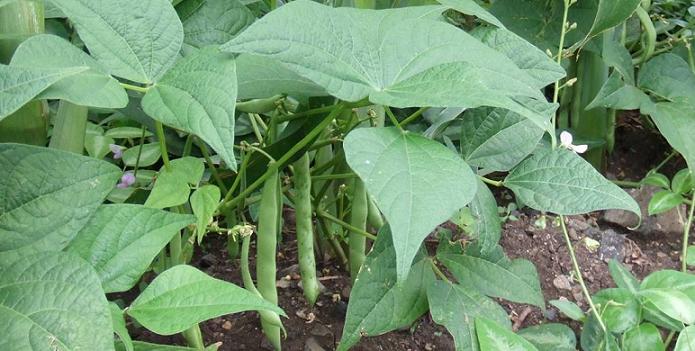One of the bottlenecks hindering rapid uptake of the Push–Pull technology is the fact that the intercrop, desmodium, although quality fodder, is not an edible plant for humans and replaces beans which are traditionally interplanted with maize. Beans constitute a major source of protein for the resource-poor farmers that cannot be compensated by a higher consumption of dairy products and meat that result from the fodder component provided by desmodium. Therefore, in an effort to address this constraint, we undertook a series of studies in Kenya to:
(i) Assess farmers’ general practice of intercropping maize with beans and how the crops are interplanted;
(ii) Farmers’ willingness to incorporate beans in their Push–Pull plots;
(iii) Farmers’ preferred planting arrangement to include beans in the Push–Pull plots;
(iv) The agronomic and
(v) Economic benefits of integrating beans in the Push–Pull system.
All the respondents (300 farmers) traditionally intercropped maize with beans, planted either between the rows of maize, in the same holes with maize or in between maize plants within a row. The majority (92%) were willing to integrate beans in their Push–Pull plots. We, therefore, evaluated effects of integrating beans in the maize–desmodium intercrops. Overall, integration of beans in the maize–desmodium intercrops and the planting arrangement did not compromise the striga and stemborer control efficacy of desmodium. Integration of beans significantly increased labour and total variable costs, with these being significantly higher in plots with both crops in different holes than in the same hole. Total revenue, gross benefits and benefit cost ratios did not significantly differ between the bean integration and maize–desmodium intercrops. Furthermore, these parameters were for most part not affected by the planting arrangements. The results show that integration of beans in the maize–desmodium and indeed Push-Pull technology while guaranteeing an additional crop, a protein source, to the farmers does not compromise the observed benefits of the technology but yields same economic benefits. Where labour is easily available, farmers are, however, advised to plant maize and beans in separate holes to avoid the risk of competition for moisture and nutrients where these might be limiting.
|


 Research Partners
Research Partners